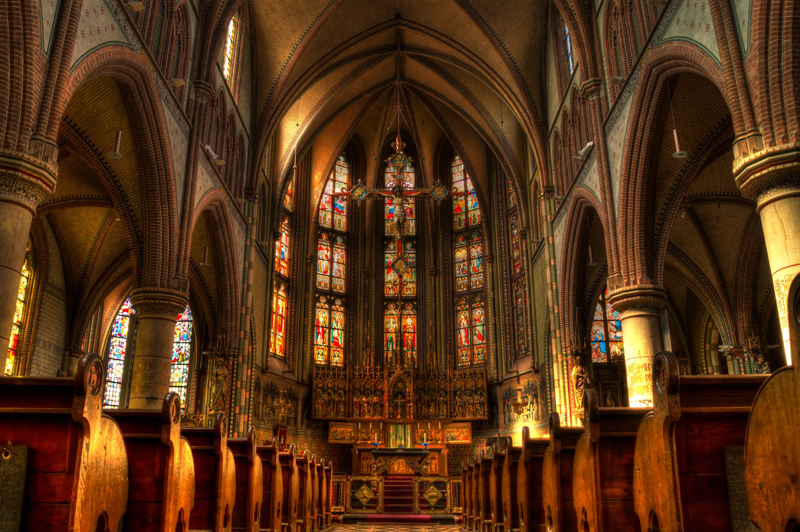Church History: Dark Ages – Part 2

Continued from Church History: Dark Ages - Part 1
With the conversion of Clovis and the Franks came a significant rise of Christendom - Christianity as the dominating cultural and organizational force of society. Around this time is when a new calendar was created and eventually it replaced the calendar that had been used in the Roman Empire for over a thousand years. This new calendar, instead of counting years from the founding of Rome, counted years from the estimated year of Christ´s birth - and is the calendar we use today.
The fifth and sixth centuries saw the rise of the monasteries. St. Patrick established monasteries all over Ireland. These Irish centers of learning and faith fostered the spread of Christianity not only in Ireland but also eventually to Scotland, Germany, northern France and Switzerland. As mentioned in Part 1 Brigid founded the double monastery at Kildare.
During the time of Clovis´ reign of the Franks in Gaul, Theodoric the Goth ruled Italy. A young man named Benedict was a law student in Rome, but after becoming disgruntled with the sin all around he sought God as others had centuries earlier by retreating to the silence of the desert. After a period of time of living the life of a hermit, monks began to join him as they all wished for a more balanced life in order to combine prayer, work, meditation and service. In 529, Benedict and his monks built a monastery between Rome and Naples - the famous monastery at Monte Cassino. It was at Monte Cassino that Benedict wrote what became the Rule of Saint Benedict. Though some of the points in it came from his own experience having been inspired by the tradition of those before him (like Antony, Jerome and Basil), this Rule is considered the most inspired account of monastic life in the West. Even today Benedict has the title of father of Western monasticism.
In 590 Gregory I, known as Gregory the Great, became bishop of Rome - the pope. As pope he had many roles to fulfill, including that of pastor, theologian, social worker, educator, administrator, builder and farmer. One of his greatest gifts to the church was his emphasis on keeping records (written) of the music used for liturgy. Until that point there was no sheet music and no way to really pass the melodies down from generation to generation. This type of music later evolved into Gregorian chant. Gregory the Great also sent a mission to Britain that was lead by Augustine of Canterbury to help establish some communication with Christians and the tribes of Angles and Saxons that had come from the continent and pushed the Christians westward. The mission arrived in Britain in 597, and was successful in converting the Anglo-Saxons, though it took about a hundred years for the whole country to become Christian.
Peace in Christ,
Melissa Knoblett-Aman

You Should Also Read:
BellaCatholic Site Map
Church History Links
GetFed Catholic Discount Catalog

Editor's Picks Articles
Top Ten Articles
Previous Features
Site Map
Content copyright © 2023 by Melissa Knoblett-Aman. All rights reserved.
This content was written by Melissa Knoblett-Aman. If you wish to use this content in any manner, you need written permission. Contact Melissa Knoblett-Aman for details.


